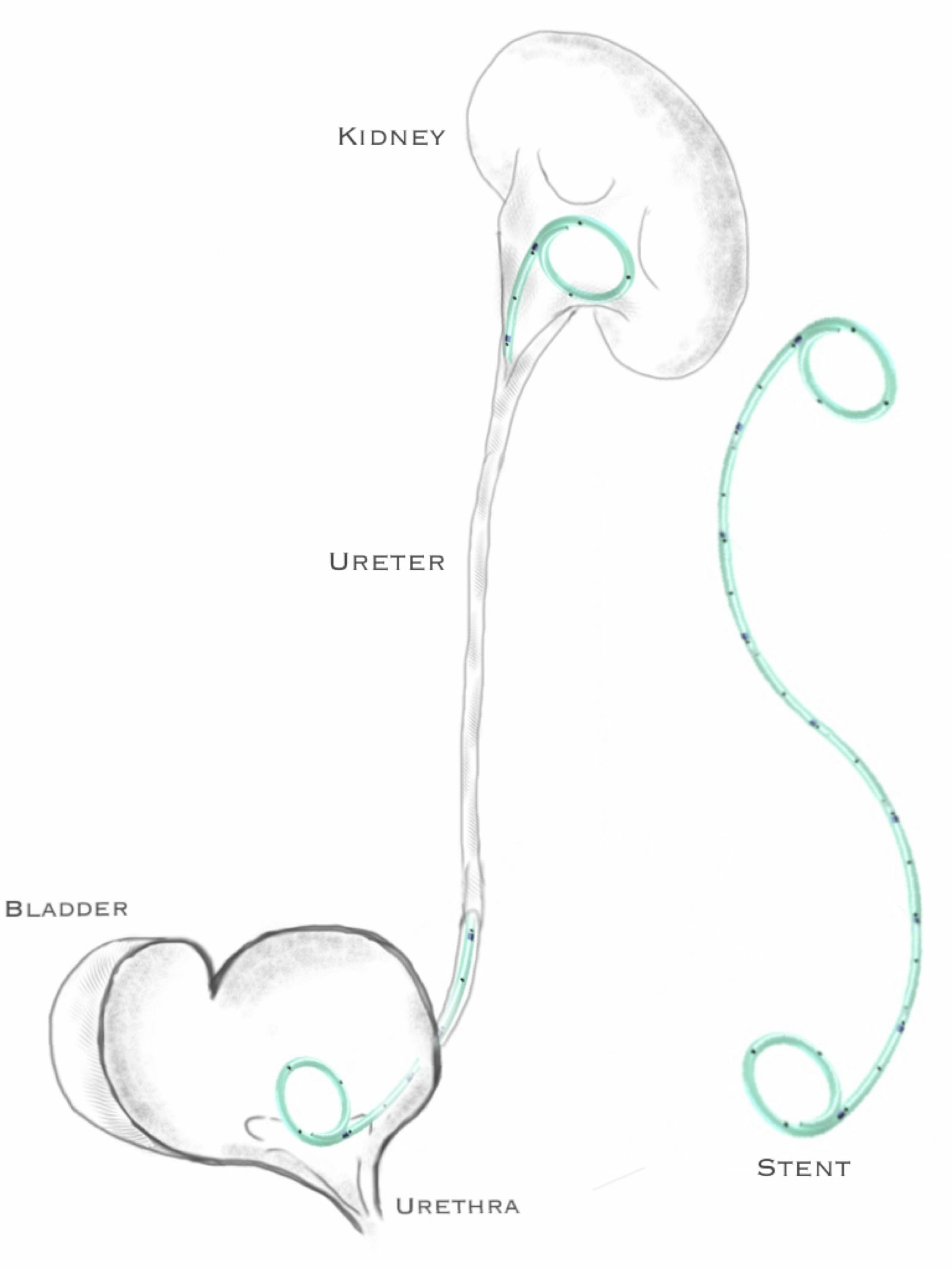A ureteric stent can be your best friend or worst enemy. Urologists will only use a stent when the benefits outweigh the risks, and in general we try to minimise the time for which stents are left inside the urinary tract.
What is a stent?
To understand the ureteric stent, we must review some anatomy. Both the kidneys sit high up in the abdomen, towards the back. They produce urine. The bladder sits down in the pelvis, and stores the urine. In between these two, on each side the ureter is a long thin tube that transports the urine down from the kidney to the bladder.
A stent is a soft, slender plastic tube with curls at both ends. The top is designed to curl in the kidney, and the bottom in the bladder. The central main straight length of stent traverses the inside of the ureter.
Why do I have a stent?
Stents are invaluable for relieving painful obstruction from a stone or from swelling of the ureter. In some cases, leaving a stent for a few days can allow much easier and safer instrumentation later.
What will I notice with my internal ureteric stent?
If you are lucky, you will not notice having a stent. Most people however will experience some symptoms, and occasionally these can be severe.
1. Blood in the urine
2. Flank pain while passing urine
3. Urinary frequency and urgency
4. General discomfort
There are no sure fire solutions to stent symptoms - apart from removing the stent! A urinary tract infection can certainly exacerbate symptoms, and in that case antibiotics will help. Often medications not unhelpful, and can have unpleasant side-effects. A warm bath or shower may help relax muscles, and a long walk may help shift the stent slightly to a more comfortable position. Often stent symptoms improve with time.
What care is required?
No special lifestyle modifications are required, and I would strongly encourage patients to return to all normal daily activities as soon as possible. If you play sport or have a physically demanding job, you will likely notice some blood in the urine after activity. Initially this can be an alarming symptom, but it must be remembered that it only takes a few tiny drops of blood to make the urine change colour.
How long can a stent stay in?
Unlike heart and vascular stents, urinary stents must eventually be removed, or, if necessary, replaced. Stents will encrust over time, and this becomes dangerous to the health of you and your kidney. If you suffer with kidney stones, stent encrustation can be quite rapid over just a few weeks. Patients who do not tend to form stones will often be able to keep a stent for much longer than that. We will take your stent out as soon as it is safe to do so.
How is my stent removed?
Removing a stent should not be difficult. After anaesthetic gel, a fine, flexible videoscope is passed into the bladder and the stent can be gently grasped and removed. In order to avoid this minor procedure, we will sometimes leave so-called “stent-on-strings”. In that case, a stent that is only needed for a few days can easily be removed in the consulting rooms.
